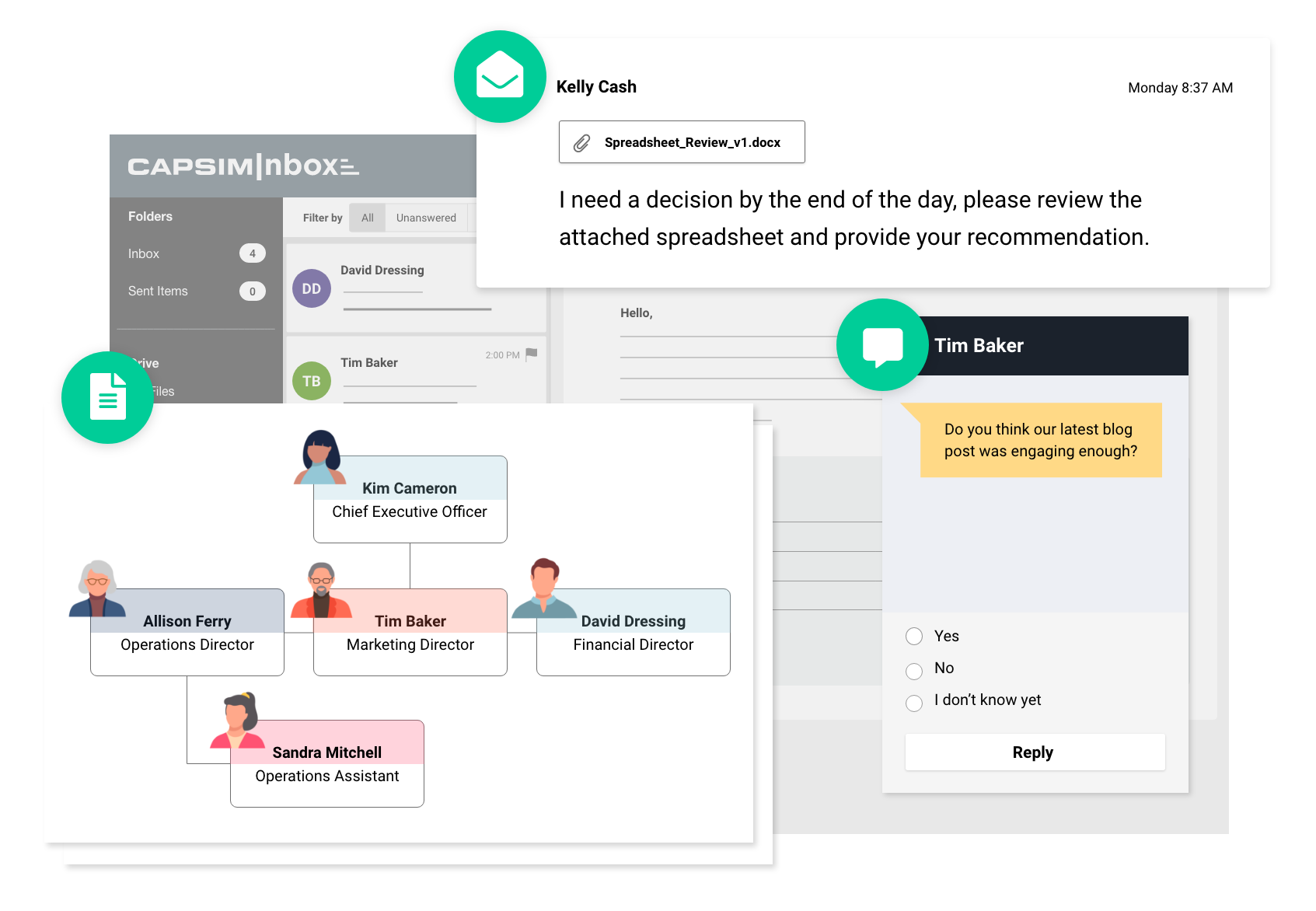4 Advantages of Simulations in Business Decision Making

August 23, 2022

“Whatever a manager does, he does through making decisions.” -P. F. Drucker
Decision-making is core to every element of your business. As suggested by the above quote, every action leadership takes results from decision-making.
But it isn’t just leaders who need to be able to make decisions: Every team member in your organization needs to be armed with the leadership soft skills, information, and confidence they need to make the right decisions for your business, day in and day out.
This post will cover some of the key advantages of simulations in business decision-making. We will discuss how business simulations can help your staff and leadership make better decisions for your company.
4 Advantages of Simulations in Business Decision Making
To understand the advantages of simulations in business decision-making, we first need to establish a common understanding of what a simulation is. In the most general sense, a simulation is any scenario where participants walk through decision-making in a controlled environment.
In a simulation, learners can imitate real-world scenarios in a risk-free environment. Though you don’t need advanced technology for an act to be a simulation (for example, a fire drill is an example of a simulation without advanced technology), business simulations tend to leverage tools and applications to maximize effectiveness and efficiency.
You can use simulations in the business environment to train employees in new skills and allow them to test those skills in a controlled yet realistic scenario. This type of training is lower risk than actually learning on the job while letting learners test their new skills.
Only 12 percent of learners currently say they can apply skills learned in training in their daily work. Simulation training aims to significantly change that figure, giving learners the knowledge and experience they need to make decisions and take action.
1. Replicates Real Life
The entire function of a simulation is to replicate real life. This duplication of reality is advantageous for honing business decision-making skills because it allows employees to practice making vital decisions in a risk-free environment.
The more reps an employee has made replicating a critical decision in a simulation, the more likely they will recognize a similar situation on the job and understand the decision they need to make.
Example: A customer support representative trains in a simulation to field customer requests like asking for discounts, warranty extensions, and more. When they return to their day-to-day job duties, they can recognize similar questions and answer them according to the best practices they learned in training—without needing to go to a supervisor for help.
2. Decreases Fear of Mistakes
Making a mistake on the job is a stressful experience. At best, it’s embarrassing. At worst, you can lose your job. The fear of making a mistake can result in decision paralysis for employees at all levels of your organization. Training with simulations helps to alleviate these fears.
Allowing employees to make mistakes and learn from them in a safe, controlled environment helps employees learn and remember information taught in training sessions. This increased knowledge and confidence will help team members make better decisions more quickly in the workplace.
Example: That same customer support representative from our earlier example granted a customer a large discount in a training simulation. The decision was incorrect—one that would have resulted in further complications had it been made in the real world.
However, since the decision was made in a simulation, the employee had the opportunity to learn from their mistake, giving them the confidence to make the right decision the next time a similar situation arises.
3. Measurable Training Results
It can be challenging to measure the effectiveness of training accurately. When you use training simulations, however, it’s simple. Training simulation programs, like CapsimInbox, will automatically log and help you analyze training results, giving you a clear picture of how your learners are picking up the material and improving their performance.
Measurable training results help with business decision-making because the insights you can glean from training results will provide leadership with the data they need to make staffing and employee development decisions. These results can also help to identify potential future leaders, training opportunities, and more.
Example: Your organization has an opening for a mid-level management position. A simulation training program to improve employees’ soft skills reveals a stand-out candidate from your lower-level staff. The training results indicate strong leadership skills, a significant desire, and the ability to learn quickly. Your organization decides to promote this employee into the open leadership position.
4. Reveals Skills Gaps
Lastly, simulations can help you reveal skills gaps within your organization. Skills gaps refer to any difference between a worker's skills and the skills they need. You can also have team-wide skills gaps, which are skills your team needs to operate successfully but that no one on the team currently has.
Identifying skills gaps in your organization is essential in making business decisions. A skills gap analysis can help guide staffing, reskilling, and upskilling decisions. You can also use this data to determine whether or not your team has the skills and experience needed to succeed in upcoming initiatives under consideration.
Example: After conducting a simulation training, you see that none of the current members on your team have the technical skills needed to implement a new technological solution your organization is considering. Before moving forward with the implementation, you know you need to either decide to hire a technical specialist or work on upskilling a member of your existing team.
Unlocking the Advantages of Simulations in Business Decision-Making
Simulations help with business decision-making processes in all of these ways and more. Data and reporting allow your leadership to make decisions based on existing skills gaps and the effectiveness of training efforts, while real-world practice and increased confidence empower your workers to make decisions on the ground level.
You will need to implement a simulation training program to unlock the advantages of simulations in business decision-making. CapsimInbox offers a top-tier simulation training tool with all the features and functionality your team needs.
Take a free, self-guided demo of CapsimInbox today to see how our simulation training platform can help your team.





.png?width=80&name=1-questions%20(1).png)